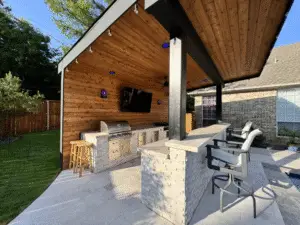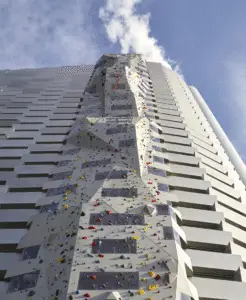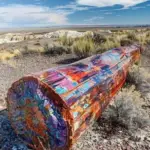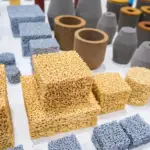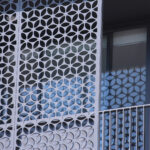The Hague, Netherlands — In a bold and poetic fusion of ecology and engineering, the Netherlands has built a coastal defense system that doesn’t just withstand the sea — it grows with it.
Introducing TideShell, a revolutionary self-reinforcing sea wall that turns storm surges into construction events and wave energy into ecological regeneration. It’s part of the Dutch government’s sweeping effort to protect the low-lying nation from the existential threats of climate change, sea-level rise, and intensifying storms.
But TideShell isn’t just defense — it’s biological infrastructure, transforming one of the world’s most engineered coastlines into a living, healing system.
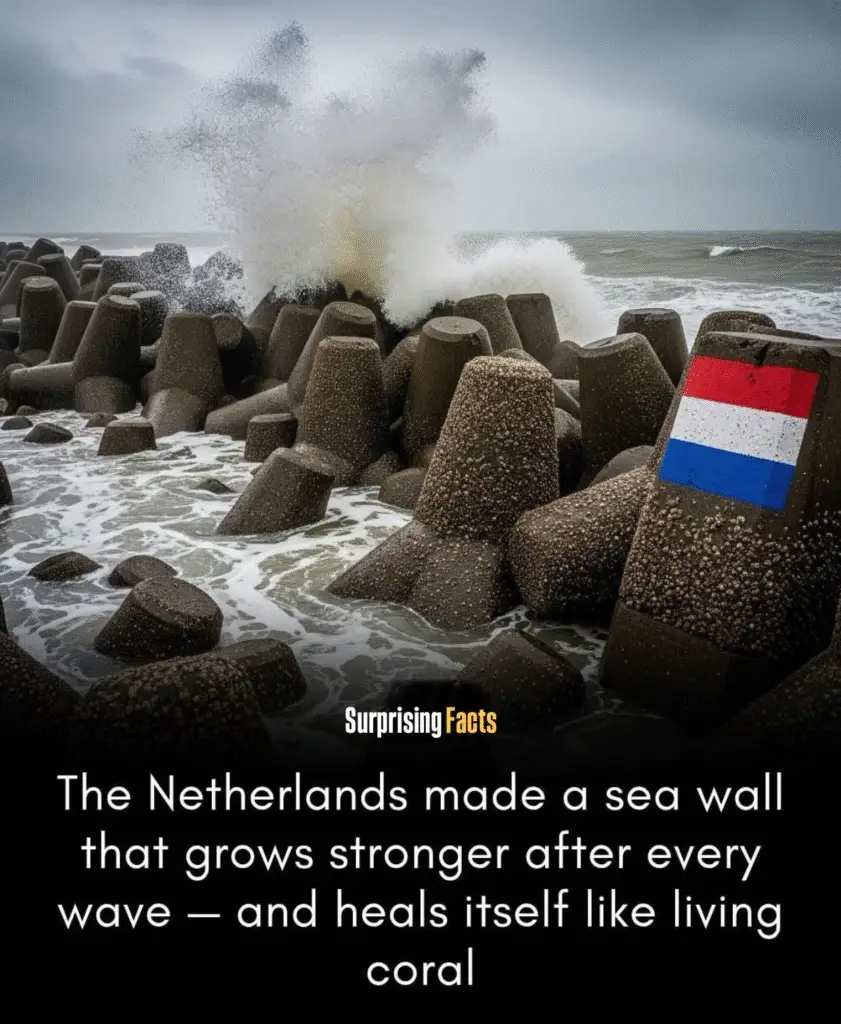
From Concrete to Coral: A New Kind of Coastal Armor
Unlike traditional sea walls made from poured concrete or steel barriers, TideShell is composed of interlocking hexagonal modules, each filled with a proprietary limestone-seeding concrete blend. At first glance, they resemble massive stone honeycombs. But beneath the geometry is a biochemical secret.
When battered by waves, the surface of each block micro-chips — not enough to degrade the structure, but just enough to release calcium ions into the surrounding water. These ions attract shell-building marine organisms like barnacles, oysters, and tube worms. As these creatures settle and grow, they begin to fuse the surface with natural biocement, creating a reef-like layer tougher than stone.
Over time, what starts as raw infrastructure evolves into living coastal habitat — a textured, biodiverse barrier that actually improves with age and exposure.
Biomimicry Meets Engineering
TideShell draws inspiration from natural coral reefs, which survive hurricane-force waves not through sheer strength, but through flexibility, redundancy, and ecological integration. The modules are designed to shift slightly with tidal forces, absorbing energy rather than resisting it head-on.
This “engineered ecology” has multiple benefits:
- Self-repairing surfaces that become smoother and more erosion-resistant over time.
- Habitat creation for mollusks, crustaceans, and fish, boosting local biodiversity.
- Carbon absorption via calcifying organisms that lock away CO₂ in their shells.
Rather than fighting nature, TideShell partners with it, ushering in a new philosophy of coastal resilience.
Like Us on Facebook!
Storm-Proven and Global-Ready
In full-scale North Sea stress tests, TideShell modules withstood wave impacts equivalent to a Category 3 hurricane. Instead of cracking, the bio-cementing organisms accelerated their colonization. Within six months, 90% of the surface was covered in living biofilm, dramatically reducing erosion and increasing surface hardness.
Subscribe Us on YouTube!
Key results from the trials:
- +38% surface strength after 9 months of wave exposure
- Erosion rate 10x lower than traditional concrete walls
- Significant biodiversity increase, with dozens of marine species colonizing test areas
Following its success in the Netherlands, pilot projects are now underway in Venice, Singapore, and coastal California, where rising seas threaten urban infrastructure.
The Future of “Soft Strength” Infrastructure
TideShell is part of a larger Dutch design philosophy known as “Building with Nature”, which prioritizes resilient ecosystems over rigid resistance. Instead of building walls against the sea, the Dutch are now creating systems that welcome and harness its energy.
According to Dr. Marieke Vos, one of the lead engineers behind the project, “We don’t need to beat the ocean — we need to learn from it. By building with biology, we make structures that heal, adapt, and even thrive under pressure.”
Concrete That Becomes Coral
In a world increasingly defined by ecological extremes, TideShell offers a hopeful blueprint: infrastructure that’s not just strong, but alive.
It reframes humanity’s relationship with the sea — not as adversarial, but as symbiotic. And in doing so, it reimagines concrete not as the end of nature, but the beginning of a new partnership.
When concrete becomes coral, even the sea cannot break it.





